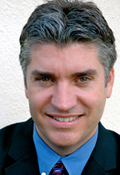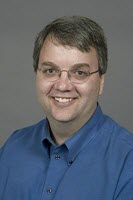New Report Reveals Many More Exonerations and False Convictions than Previously Found, but Represents Only “the Tip of the Iceberg”
More than 2,000 people who were falsely convicted of serious crimes have been exonerated in America in the past 23 years.
Nearly 900 of these exonerations are profiled, with searchable data and summaries of the cases on the National Registry of Exonerations, a new joint project of the University of Michigan Law School and the Center on Wrongful Convictions at Northwestern University. The Registry, available atexonerationregistry.org, will be updated on an ongoing basis. It is by far the largest collection of such cases ever assembled – and the most varied.
More than 1,000 additional cases are “group exonerations” that occurred in response to 13 separate police corruption scandals, most of which involved massive planting of drugs and guns on innocent defendants. The group exonerations are described in a Report from the National Registry, Exonerations in the United States, 1989 – 2012, but are not included in the Registry itself.
As the Report documents in detail, there are many more false convictions and exonerations that have not been found
“The National Registry of Exonerations gives an unprecedented view of the scope of the problem of wrongful convictions in the United States,” said Rob Warden, Executive Director of the Center on Wrongful Convictions. “It’s a widespread problem.”
“It used to be that almost all the exonerations we knew about were murder and rape cases. We’re finally beginning to see beyond that,” said Michigan Law professor Samuel Gross, editor of the Registry and an author of the Report. “This is a sea change.”
The Report includes the following cases, most of which do not appear in any previous compilation:
· 58 exonerations for drug, tax, white collar and other non-violent crimes.
· 39 exonerations in Federal cases.
· 102 exonerations for child sex abuse convictions.
· 129 exonerations of defendants who were convicted of crimes that never happened.
· 135 exonerations of defendants who confessed to crimes they didn’t commit.
· 71 exonerations of innocent defendants who pled guilty.
Plus more than 1,000 group exoneration cases – including over 200 drivers who were framed for drunk driving by police officers, who usually stole money from their wallets in the process.
According to Gross, the cases in the Registry show that false convictions are not one type of problem but several that requiredifferent types of solutions.
· For murder, the biggest problem is perjury, usually by a witness who claims to have witnessed the crime or participated in it. Murder exoneration also include many false confessions.
· In rape cases, false convictions are almost always based on eyewitness mistakes – more often than not, mistakes by white victims who misidentify black defendants.
· False convictions for robbery are also almost always caused by eyewitness misidentifications, but there are few exonerations because DNA evidence is hardly ever useful in robbery cases.
· Child sex abuse exonerations are almost all about fabricated crimes that never occurred. (See Table 13.)
The ten states with the most exonerations are Illinois, New York, Texas, California, Michigan, Louisiana, Florida, Ohio, Massachusetts, and Pennsylvania (not counting the 39 exonerations in Federal cases). The states with most exonerations are not necessarily those where most false convictions have occurred. (See Table 7.)
“It’s clear that the exonerations we found are the tip of an iceberg,” said Gross. “Most people who are falsely convicted are not exonerated; they serve their time or die in prison. And when they are exonerated, a lot of times it happens quietly, out of public view.”
For example, most people in the United States live in counties in which there have been no exonerations – including counties like San Bernardino in California and Bexar in Texas that have populations in the millions. “Obviously there are false convictions in those counties – and no doubt exonerations in some cases,” said Gross, “we just don’t know about them.”
According to Warden, “this is a good start – a milestone – but there’s a long way to go before we have a complete picture of wrongful convictions in the United States.”
“We’ve begun to find exonerations that don’t fit the mold we’re used to – some that were initiated by prosecutors or police, and some that were deliberately concealed – but we know there are many more that we haven’t found, at least not so far,” said Gross.
“If you’ve been exonerated and aren’t in this Registry, or if you know someone who has been exonerated and isn’t included, we want to know about it,” said Gross.
“The more we learn about false convictions, the better we’ll be at preventing them – or if that fails, at finding and correcting them as best we can after the fact,” said Gross.
Registry here…
Washington Post article here….
Chicago Sun-Times here
From USA Today:
Perjury, faulty eyewitness identification and prosecutorial misconduct are the leading reasons for wrongful convictions, according to the first national registry of exonerations compiled by university researchers.
The database, assembled in a collaboration by theUniversity of Michigan and Northwestern University, has identified 873 faulty convictions in the past 23 years that have been recognized by prosecutors, judges or governors.
The registry’s founders say the numbers, which do not include many cases in which innocent suspects plead guilty to avoid the risk of more serious punishments or cases that have been dismissed because of legal error without new evidence of innocence, represent only a fraction of the problem in the nation’s criminal justice system.
“What this shows is that the criminal justice system makes mistakes, and they are more common than people think,” said University of Michigan law professor Samuel Gross, the registry’s editor. “It is not the rule, but we won’t learn to get better unless we pay attention to these cases.”
Despite the data, the registry concluded that the “overwhelming majority of convicted defendants are guilty.”
“Most never dispute their guilt and few ever present substantial post-conviction evidence of innocence,” the registry found. “When that does happen, however, it should be taken seriously. …We cannot prevent all false convictions, but we must not compound these tragedies by stubbornness or arrogance or, worst of all, indifference.”
Scott Burns, executive director of the National District Attorneys Association, a national advocacy group for prosecutors, said prosecutors in the USA handled about 400 million non-traffic-related cases during the same period studied by the registry. Exonerations “give the gross perception that there is a serious problem with wrongful convictions in this country, and it is just not the case,” Burns said.
The cases in the registry were identified from court documents and include catalogs of wrongful convictions maintained by advocates for the wrongfully convicted, including the The Innocence Project, a New York-based group that pursues exonerations through DNA testing.
Since 1989, DNA testing has been responsible for the exonerations of 289 people in theUnited States, including 17 who served time on death row, according to The Innocence Project.
Among the registry’s major findings:
•Of the 416 homicide exonerations, 64% were attributed, at least in part, to perjury or false accusation. Official misconduct by either prosecutors or police, including the withholding of evidence favorable to the suspect, was a contributor in 56% of the cases.
•In the registry’s 203 sexual assault cases, 80% involved mistaken eyewitness identification.
•Faulty witness identification was a factor in 81% of 47 robbery cases.
Gross said much of the misconduct involved the failure to disclose information or evidence that might have been helpful to the defendants.
Wrongful convictions represent “our worst nightmare,” Burns said. “One is one too many. But I would argue the system is working quite well.”


















Pingback: Reflections on System Resistance to Innocence Part II | Wrongful Convictions Blog
Pingback: Exonerations in the United States, 1989 – 2012 Report by the National Registry of Exonerations | Wrongful Convictions Blog
Pingback: News Videos - NEWSTALKTV24.COM
Pingback: New database tracks exonerations in USA | Michigan News Press | Michigan Breaking News Headlines | Michigan News Directory
Pingback: Reaction to Exoneration Registry Outside the U.S. Focuses on Death Row… | Wrongful Convictions Blog
Pingback: Blawg Review #323 – Memorial Day, the Rule of Law, & Human Rights. | Wrongful Convictions Blog
Pingback: Informative New Video on Exoneration Registry…. | Wrongful Convictions Blog
Pingback: Tuesday’s Quick Clicks… | Wrongful Convictions Blog
Pingback: Why I Think the US Justice System is Broken – and Why It’s Not Getting Fixed | Wrongful Convictions Blog